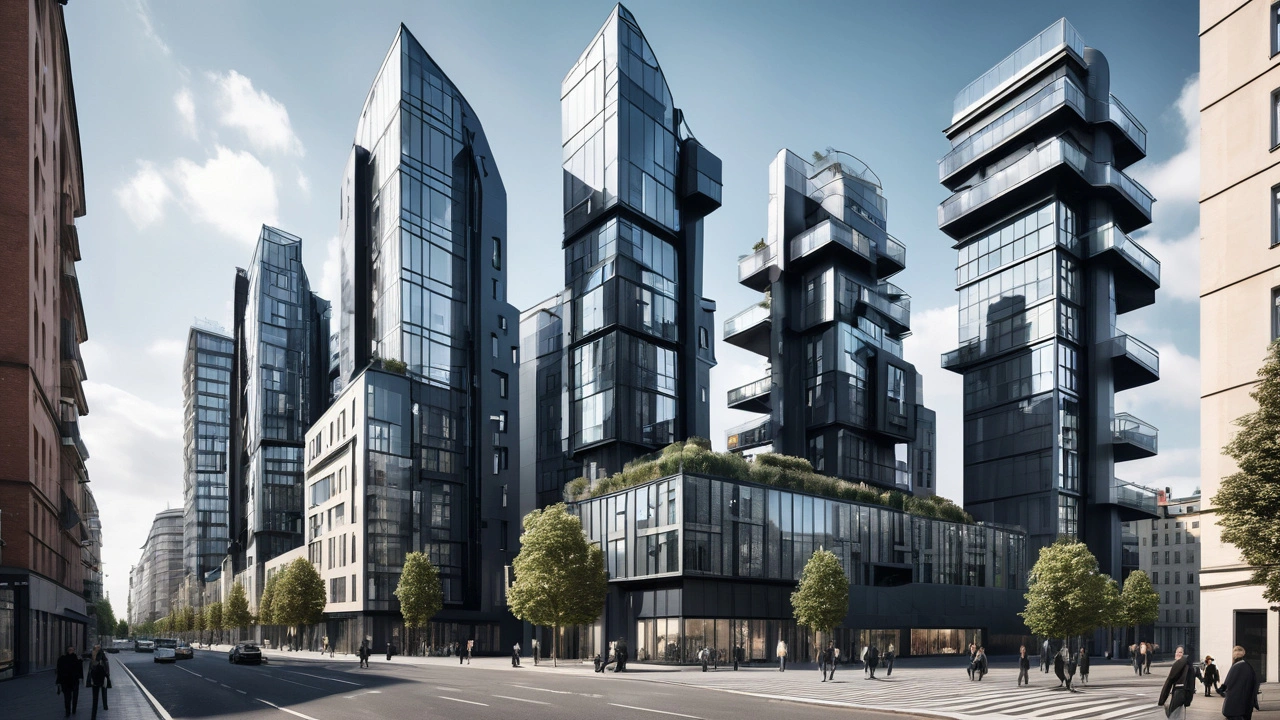Future design: how buildings and tech will actually change our lives
Think future design is all glass towers and sci-fi gadgets? Think again. The next wave blends old lessons with new tech: durable materials, smarter use of space, and design that responds to climate and people. You’ll find echoes of Roman engineering, Gothic drama, and minimalism—but used smarter, not copied blindly.
Concrete trends you’ll see everywhere
Parametric design and AI-driven tools let architects tune building skins for light, heat, and air flow. That means facades that change shape or pattern to cut glare and boost comfort. Mass timber and cross-laminated timber are replacing steel in mid-rise buildings for lower carbon and warmer interiors. 3D-printed components cut waste and let builders make curved, custom pieces faster and cheaper.
Sustainability now means systems, not just materials. Passive House rules, better insulation, smart glazing, and natural ventilation reduce energy use before you add solar panels. Green roofs and rain harvesting bring nature back to dense cities while managing storms. Circular design aims for buildings that can be disassembled and reused instead of trashed.
How future design affects everyday life
Homes will be more flexible. Expect rooms that shift function with modular walls or furniture, so a living room can become an office or a guest room with minimal fuss. Smart sensors will stop being novelty gadgets and become tools that tune light, heat, and air to how you actually live. That reduces bills and keeps spaces healthier.
Adaptive reuse—turning old factories, banks, or churches into homes and studios—is a practical part of future design. It saves embodied carbon, preserves character, and often costs less than new construction. You don’t need a historic landmark to use this idea: turning a garage, shop, or warehouse into a lived-in space follows the same logic.
If you’re picking materials: favor durability over trend. Stone, engineered timber, low-VOC finishes, and high-performance windows last longer and age better. Look for certifications like FSC for wood or third-party life-cycle assessments when possible. Small choices add up when repeated across many buildings.
Designers and homeowners: start with climate, not style. Study local sun paths, wind, and seasonal patterns before choosing a facade or window layout. A few smart moves—proper shading, stacked ventilation, and thermal mass—cut energy use far more than flashy tech alone.
Finally, expect aesthetic mashups. Revival styles (Greek, Gothic, Beaux-Arts) will show up as details or motifs, mixed with minimalist interiors or bold postmodern color. That mix is less about copying and more about reinterpreting strong ideas for today's needs.
Want one practical action? Make flexibility a rule: choose at least two ways a room can be used, pick furniture on casters, and favor plug-and-play wiring. Those small steps make your space ready for the design shifts coming next.

The Future of Constructivist Architecture: Bold Designs and Innovation
Discover the world of constructivist architecture, a movement that combines technology, practicality, and artistic vision. This article explores the history, core principles, notable examples, and future developments of constructivist designs. Find out how this architectural style pushes the boundaries of what's possible, offering tips for aspiring architects and enthusiasts.
Read more